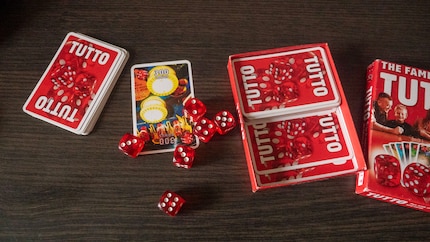
Guide
Throw, hit, have fun! My favourite garden games for the whole family
by Michael Restin

When evening comes around, it’s game time. But finding a tabletop game that appeals to both adults and children can prove tricky. Here are five suggestions including ratings from three children aged 9 to 12.
«What are we playing tonight?» – a question that can lead to heated discussions, long faces or loud sighs in a family. While some people enjoy strategy games, others love skills or action. To make sure everyone’s tastes are taken into account, you have to throw something new into the mix every once in a while. It’s always interesting to see if a new game immediately catches on with the children, takes several attempts or fails completely.
With my three fellow players aged between nine and twelve, I tried out four games that are easy to get the hang of and take between five and 45 minutes to play. I’ve also thrown in our family favourite of the past few months as top tip that will appeal to three generations, even when it’s getting late.
To create space, you may also move the playing field. But watch out! The oval magnets move easily, realign themselves over and over again and bump into each other with a loud noise that’s difficult to describe. (The sound’s much duller when they hit a wooden floor, in case you were wondering!)
Each round only lasts a few minutes, doesn’t require much strategic thinking but delivers plenty of action. That’s a recipe for success in our case. I asked the kids to rate the game on a scale of 1 to 10:
Boy, 9 years old: 9.7
Boy, 12 years old: 8
Girl, 12 years old: 6.5
Seeing that you don’t miraculously become sensible at age 14, it’s probably not a bad idea to explore magnetism together beforehand and to point out potential risks as well. As the magnets are flat in this version of Kluster, you can use the repelling force to push away other players’ magnets, making more room for your own.
With 24 magnets, things take a little longer to get tricky than with Kluster Duo. Plus, the sound the magnets make when they click together isn’t quite as interesting as with their large, conical relatives in the Duo version. All of the above is also reflected in the rating:
Boy, 9 years old: 8.8
Boy, 12 years old: 7
Girl, 12 years old: 8
Criticisms from my test trio include that the magnets should attract each other more strongly and the poles should be labelled. My verdict? The game’s fine the way it is. It’s a little more sophisticated and static, but offers more strategic options. Even six-year-olds can play it, but the danger of strong magnets shouldn’t be underestimated.
You’re not allowed to lock a pawn in, which creates a kind of maze. As the name suggests, you need to keep a corridor free at all times. The aim is to force the other players to take detours and move forward as quickly as possible yourself. You can jump over your opponent’s pawns if they’re right in front of you and thereby move forward two squares.
The boys’ initial grumbling soon made way for some focused and collaborative play. It’s a bit like a game of poker; you never know who’s going to put up a wall or if you can trust the other players to block each other as expected. The game is recommended for players who are eight years or up. How long a round lasts depends on how much thought players put into each move.
The boys liked the fact you can mess with the other players and the strategic element. They did suggest that players shouldn’t be allowed to collude or form alliances against other players. The 12-year-old described the game as an extended version of Ludo and would’ve liked even more wall elements. They all enjoyed the wooden game board and pieces.
Boy, 9 years old: 7.5
Boy, 12 years old: 6.5
Girl, 12 years old: 8
I think the game has a lot of potential despite its simple rules and isn’t exhausted as quickly as Kluster.
This classic was voted Game of the Year 2018 and is much more strategic. The 12-year-old boy already knows the game and shows us all how it works. The beautiful design of Azul is very appealing. The counters are modelled on Portuguese azulejos and players play the role of tilers.
In the end, the most beautiful pattern is awarded the most points. That’s why you have to choose your colours wisely in each round and keep a close eye on the other players’ boards. If you manage to make a row of 1–5 tiles one colour, you can move one tile of that colour to the right in your mosaic at the end of that round.
How many points you get depends on the surrounding stones. Although the game doesn’t take long to explain, it has depth. You can find the children’s opinion below and a detailed review from an adult perspective here.
Each game lasts a good half an hour. The 12-year-old boy claims you get the hang of Azul relatively quickly and that there should be more rounds. The youngest would’ve liked a bit more action and the 12-year-old girl likes the fact that your options and therefore the game are constantly changing.
Boy, 9 years old: 7
Boy, 12 years old: 7
Girl, 12 years old: 8
I think Azul deserves a 10 for the idea and beautiful design. It can be played with 2–4 people from the age of eight, and also comes in a mini version for travel (available in German and French).
You’ll usually hit a a high score when all six dice are involved. Otherwise, fives equal 50 points and ones equal 100 points. Triplets are also a good thing and will earn you 200 points for twos, 300 points for threes... you get the idea. Ones have a special standing and will earn you 10,00 points if you manage a triplet. You need to roll at least one valid die when it’s your turn, otherwise you risk losing everything. Unless you decide to quit.
This makes the game exciting and comes with some math problems that are easy enough for the kids to solve. The winner is the first player to score 6,000 points. Tutto is recommended for players aged 8 and up, but would also work for younger players if they get a little help with the maths.
Which family games do you enjoy? Thanks for sharing your recommendations in the comments!
Simple writer and dad of two who likes to be on the move, wading through everyday family life. Juggling several balls, I'll occasionally drop one. It could be a ball, or a remark. Or both.
Practical solutions for everyday problems with technology, household hacks and much more.
Show allTwelve magnets and a string that’s tied together at the ends to mark the borders of the playing field – that’s all there is to Kluster Duo, a game of skill for two people. The first person to get rid of all their magnets wins. To do this, the players take turns placing them within the playing field. If two or several magnets connect to yours when you put your magnet down, you have to take them all. It also means your playing partner will have more space to place their next magnet.
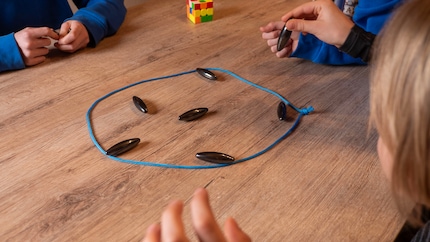
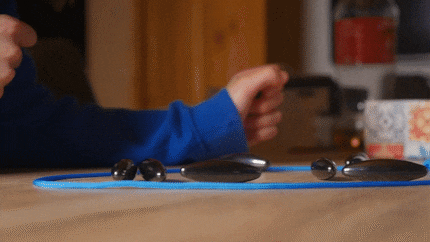
Our sceptic justifies her 6.5 by saying the game doesn’t offer much variation, and she’s right. You definitely get the hang of it at some stage, but that won’t stop you from making the odd mistake and having to endure the frustration that goes with that. Not to mention the schadenfreude of the other player. My verdict? This isn’t a game you’ll play all the time, but definitely one worth getting out once in a while for a fun-packed evening. Age recommendation: 7+.
Because playing with magnets is awesome, we also tried out the original Kluster. It’s essentially the same as Kluster Duo, but features 24 smaller, flat magnets and can be played by up to four people. However, this version of the game is rated 14+. How come? «Because many players swear when they mess up,» my youngest suggests. I like his theory, but by that logic, the same should apply to Kluster Duo.
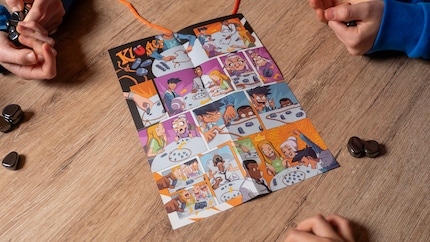
The real reason for the age restriction is the strong magnets. You need to keep them away from pacemakers, but also from anyone who might get into mischief with them or swallow them. If you want to know more about the dangers of magnets, this fact sheet issued by the Federal Office of Public Health contains lots of information.
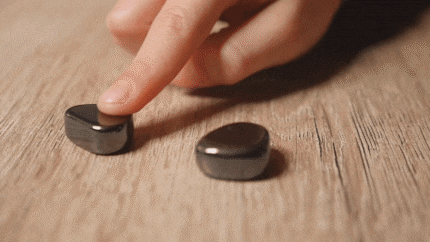
Quoridor doesn’t take much explaining either and can be played by up to four people. It got off to a difficult start with the boys because they had to put their smartphones aside in exchange for a wooden board with wooden pawns. Each pawn starts in the middle of one side of the square playing field and aims to be the first to reach the opposite end. The other players can prevent this by placing one of their five obstacles in the way. In return, however, they’re not allowed to make a move.


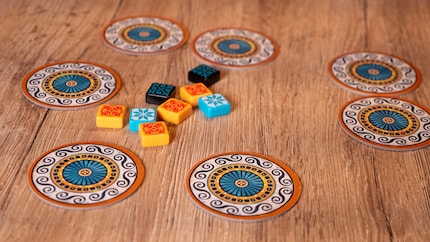
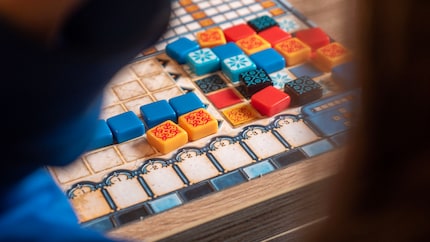
My bonus tip without a rating is Tutto. It’s that one game we – that’s three generations – have been able to agree on over the past few months when we’ve been up for a quick game on our holidays. It involves a bit of rolling the dice, some luck and a bit of maths. That’s all there is to Tutto (also known as «Volle Lotte» in German-speaking countries). The face-up card determines whether you get to roll the dice, what number you need and how many points you can score in the best case.
